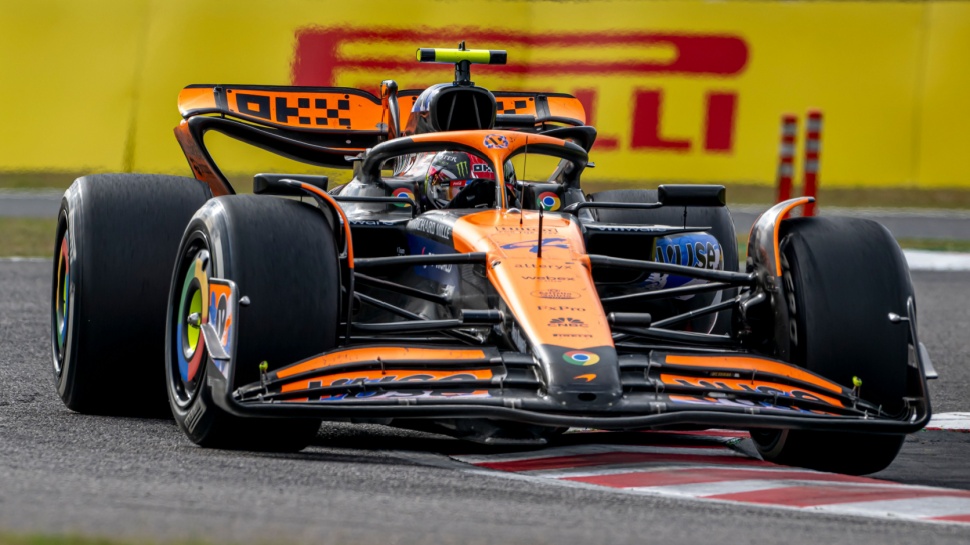
Formula 1 racing is the pinnacle of precision and efficiency. As we gear up towards the global finale, this season’s races have shown us that securing pole position is not just about the driver’s skill or the car's performance but also about the efficiency of the pitstop team. This high-stakes, carefully executed process provides invaluable lessons for tech teams operating in today’s rapid and demanding business landscape.
In Formula 1, every second lost in the pitstop is a second lost on the track. Similarly, fast-paced tech teams must prioritise efficiency and quick decision-making. In critical situations where reducing time to market is essential, this can significantly impact a product’s success or failure. By adopting the pit crew's approach—emphasizing precision and coordinated teamwork—tech teams can drive their projects toward success.
Enhancing team coordination and efficiency
Pitstop crews are highly coordinated, with each member having a clearly defined role that contributes to a seamless operation. Similarly, across nuanced and complex tech projects, it’s paramount that team members have clearly defined roles. When each member understands their specific contributions, teams can avoid costly overlaps and gaps.
For example, during a software development project, clear role definition helps in delineating responsibilities for front-end developers, back-end developers, and UI/UX designers. This allows teams to work in parallel without waiting on each other’s tasks, much like a pit crew where tire changers, refuelers, and mechanics work without interference.
Building trust and empowerment within teams
In high-pressure environments like Formula 1 and product development, trust among team members is essential. Teams that trust each other’s expertise and ability to execute can operate more fluidly and make decisions faster. Creating a culture where team members feel empowered to think independently can enhance this trust and improve overall performance.
One way to build this in a tech environment is through regular team-building activities that not only boost morale but also help in forming personal bonds that translate into professional trust. Additionally, encouraging open communication and sharing of ideas without fear of criticism can foster an inclusive and collaborative atmosphere.
Leveraging technology to boost performance
Just as F1 teams use technology and data to cut down pit stop times, tech teams can use modern methodologies to enhance their operational efficiency. For instance, adopting lean principles can help teams identify waste in their processes and eliminate it, thus speeding up the development cycle without sacrificing quality.
Moreover, leveraging robust software and project management tools can streamline coordination and oversight of complex projects. For example, cloud-based project management platforms enable real-time tracking of progress, resource allocation, and deadline management. These help maintain a bird's-eye view of the project landscape, allowing team leaders to keep the project moving swiftly and efficiently.
Leadership that maintains direction
The role of a pit crew chief is crucial as they oversee the entire operation, making sure everyone is synchronized and performing at their best under pressure. Similarly, tech team leaders must maintain composure and provide clear direction during critical phases of product launches or when unexpected challenges arise.
An effective project leader, like an F1 crew chief, must be able to assess situations quickly and guide their team through effective decision-making processes, ensuring every member remains on track. This might involve pivoting project directions in response to test feedback or market changes, ensuring the product remains competitive and meets user needs.
Vision-driven execution and continuous improvement
A clear, compelling vision is crucial for driving teams toward success. In F1, the vision is clear—optimise each stop to win the race. In tech, the vision might be to innovate continually and lead the market in user-centric products. Leaders must keep this vision clear and integrate it into all aspects of project management and team culture.
Continuously improving based on feedback loops—from users, stakeholders, and team members—can help tech teams adapt and excel. This is similar to how pit crews analyze every second of their operations to refine and speed up their processes for future races.
By embracing the efficiency, teamwork, and strategic planning of Formula 1 pit crews, tech teams can achieve greater productivity and push the boundaries of what they can deliver in their competitive fields. This strategic approach not only speeds up development cycles but also builds a strong foundation for sustained success and growth.
We've featured the best business intelligence platform.
This article was produced as part of TechRadarPro's Expert Insights channel where we feature the best and brightest minds in the technology industry today. The views expressed here are those of the author and are not necessarily those of TechRadarPro or Future plc. If you are interested in contributing find out more here: https://www.techradar.com/news/submit-your-story-to-techradar-pro







